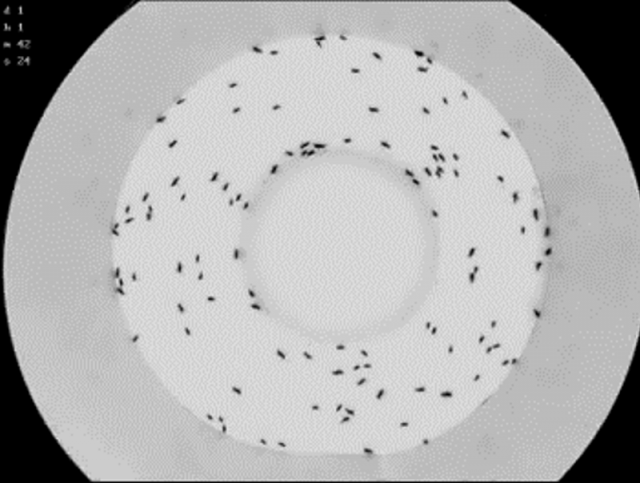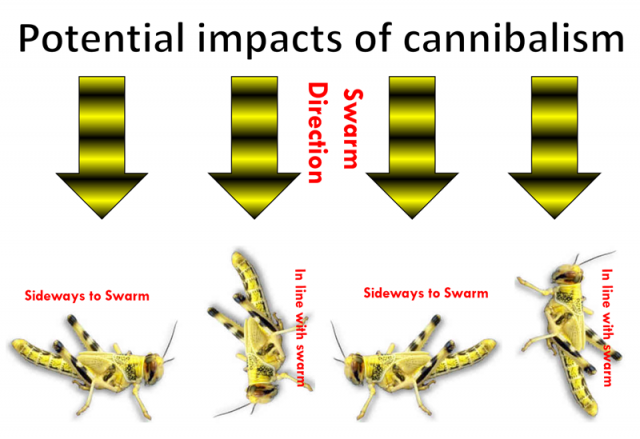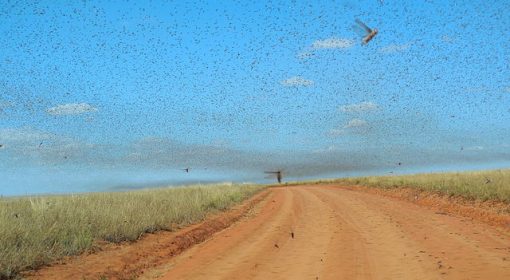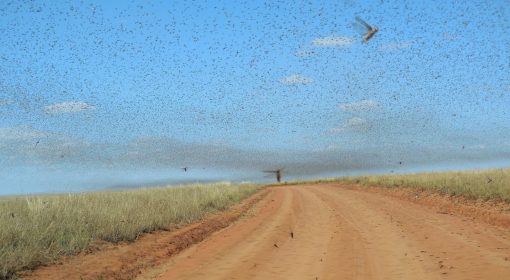Mathematical models offer insight into how locusts form and move as swarms; and how to break them up to limit the damage they cause.
For long, swarm movements—such as perfectly coordinated flocks of birds and schools of fish that move like a single organism— have evoked awe and appreciation for the wonder that is nature. Thankfully, they have also drawn mathematicians who have endeavored to break down these graceful, synchronized movements into base rules and equations.
Thanks to a team of such dull mathematicians, we now have a good understanding of the dynamics of a much feared force of nature—swarms of Desert Locusts.
Over the last year or so, locust outbreaks in East Africa and West Asia have wiped out massive amounts of crops and swathes of pasture. The sheer size of swarms and the sheer amount of food they devour within a matter of hours is triggering hunger crises—from Kenya and Ethiopia to Pakistan and India, and even Argentina most recently. In East Africa alone, 19 million are at risk of a much bigger crisis if the infestation continues unabated.

Christian Yates from University of Bath, along with a team of fellow mathematicians, has set up a small ring-shaped arena in a lab in which he places locusts and observes their behaviour. Over the past few months, he has applied mathematical models to his observations and reached the following conclusions, among others:
- Individually, locusts move every which way. However, when part of a swarm, they try to move in the same direction as their neighbours. They adjust their velocity (speed and direction) to a level which is approximately the average of the velocity of their immediate neighbours. Thus, the bigger the swarm, more coordinated and sustained are its movements.Another way to put it: at low population densities, locusts avoid each other and move around as solitary individuals. Beyond a certain number per square kilometre, swarm behaviour kicks in and they start moving as a group.
- Locust swarms—like swarms of other species—switch direction every now and then. The bigger the swarm, less frequent is the switching.
- Locusts are known to cannibalize. Other locusts are a good source of protein and salt. Locusts eat other locusts that come up sideways against them. This is an incentive to stay in line with the swarm.

Lessons for locust management
What do conclusions from this research imply for measures being taken for prevention/management of locust outbreaks at the ground-level?
Local-level measures
The findings provide credence to some local-level measures taken to disrupt invading swarms; such as burning tyres and catching them in nets. Additionally, they point to some less common measures such as deploying low-flying planes and drones to create noise/wind disturbance. Disrupting swarms disorients individual locusts; which may help divert swarms, break them up into smaller swarms, or obstruct their movement buying some time for communities further down their flightpath.
In the big picture, these measures merely redirect swarms elsewhere, making it someone else’s problem. However, in the face of an impending invasion, this may be a viable measure from the point of view of local (village/district-level) authorities.
Catch them young
As locusts increase in numbers, they become more and more coordinated, and thus more and more difficult to control. It is best to exterminate them when they are still hoppers (usually done using pesticide), before they develop wings and can take flight.
It is very important to also target smaller swarms for extermination, and not wait until they become large. Larger swarms are more difficult to cover, and need more pesticide which results a higher pesticide residue in the environment.
Based on presentation by Christian Yates, University of Bath, at the 1st Virtual Practitioners Conference on Desert Locust Management 2020



